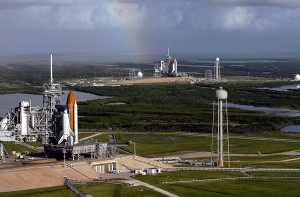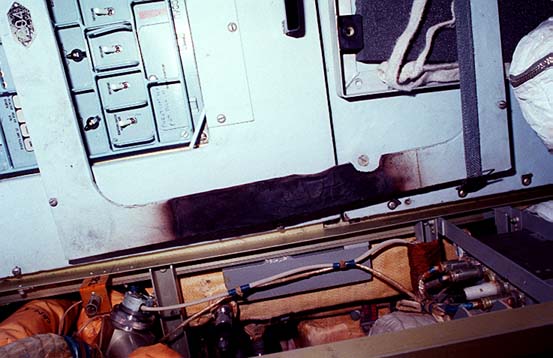How Astronauts Deal With Emergencies
Posted on Categories Discover Magazine

A rare sight: Two space shuttles prepped for launch simultaneously; Atlantis sits in the foreground on Launch Pad A, while Endeavor sits in the background on Launch Pad B. (Credit: NASA/Troy Cryder)
There was, at one point, a backup shuttle prepared. When the space shuttle Atlantis was launched for the STS-125 mission to service the Hubble Space Telescope, the Endeavour was also ready as a backup in case something went wrong and the crew of the Atlantis needed to be evacuated quickly. There would have been no way for the Atlantis crew to make it to the International Space Station, because Hubble is in a much lower orbit.
Emergency Potential
What sorts of emergencies could happen out in space?
Medical emergencies can occur in outer space just as often as they happen here on Earth, but being in orbit means that the astronauts are hundreds of miles straight up from the nearest doctor — and they don’t always send medical doctors into space. That’s why all astronauts receive basic medical training. Even things like CPR, which is standard procedure here on Earth, can be difficult without gravity to hold the patient to the ground.
Micrometeorites are another hazard astronauts may encounter in space. These tiny pieces of space dust get accelerated to supersonic speeds, and even a flake can be devastating. A hole in the hull of the International Space Station can create a massive emergency — venting oxygen makes it hard to breathe and could potentially push the station out of its orbit. This became all too real recently when astronauts aboard the station discovered a tiny hole on the Russian side. Though it was small enough that there was no immediate danger, astronauts still had to scramble to improvise a fix. One crew member initially improvised with his thumb until the hole was taped, and eventually fixed more permanently with epoxy.
There’s no official plan in place to repair the hull in the event of a breach, though. If the compartment can’t be isolated and fixed later, the emergency plan in place is to shut down the station and evacuate back to Earth in the attached Soyuz module.
Fire can also be a problem in space. This became starkly apparent in 1997, during a fire aboard the Soviet MIR space station. A faulty lithium-perchlorate canister — used to produce oxygen on MIR — ignited faster than intended, creating a fire that blocked the astronauts’ escape route to one of the two vehicles needed for evacuation. Only three of the six crew members on board could have left. When you’re dealing with fire in space, you’re also dealing with the fact that fire burns oxygen, which is in limited supply.
